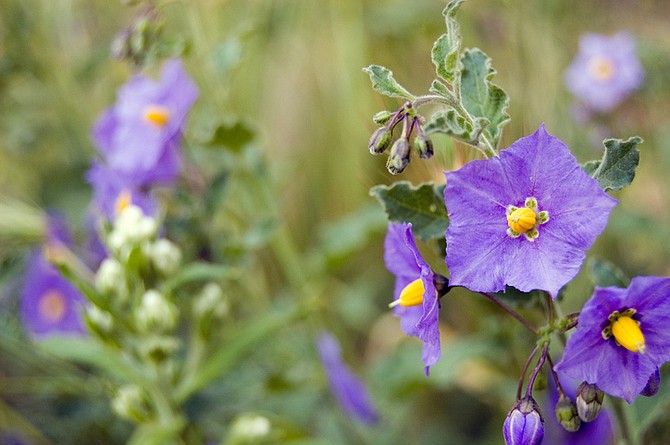 Facebook
Facebook
 X
X
 Instagram
Instagram
 TikTok
TikTok
 Youtube
Youtube

The Catalina Eddy, a meteorological condition responsible for days-long episodes of dreary, overcast weather over San Diego, is most likely to occur in May and June. This weather pattern, which intensifies our late spring “June gloom,” happens when moist marine air, drawn inland from the area around Santa Catalina Island, condenses in the form of low clouds along the Southern California coastline. June gloom has already begun and could intensify next month. Occasionally the low clouds will stick around for several days. This is usually triggered by a “Catalina eddy” in which moist marine air drawn inland from the area around Santa Catalina Island forms low clouds over a wide area. In the absence of Catalina eddy conditions, San Diego’s inland areas, at least, experience plenty of midday and afternoon sunshine.
Spring Wildflowers may have largely dried up in most areas of San Diego County, but in the cooler coastal enclaves such as Cabrillo National Monument and Torrey Pines State Reserve, several kinds remain. Look for paintbrush, purple nightshade, coreopsis, sea fig, popcorn flower, and red monkey flower, among others.
Wild Rose, a California native, is in bloom in San Diego County’s foothills and mountains. In moist, lowland areas and along small watercourses the wild rose shows off small, fluorescent-pink flowers. By June and July, the rose bloom will reach the Laguna Mountains, where the plant grows in abundance in shady locales.


The Catalina Eddy, a meteorological condition responsible for days-long episodes of dreary, overcast weather over San Diego, is most likely to occur in May and June. This weather pattern, which intensifies our late spring “June gloom,” happens when moist marine air, drawn inland from the area around Santa Catalina Island, condenses in the form of low clouds along the Southern California coastline. June gloom has already begun and could intensify next month. Occasionally the low clouds will stick around for several days. This is usually triggered by a “Catalina eddy” in which moist marine air drawn inland from the area around Santa Catalina Island forms low clouds over a wide area. In the absence of Catalina eddy conditions, San Diego’s inland areas, at least, experience plenty of midday and afternoon sunshine.
Spring Wildflowers may have largely dried up in most areas of San Diego County, but in the cooler coastal enclaves such as Cabrillo National Monument and Torrey Pines State Reserve, several kinds remain. Look for paintbrush, purple nightshade, coreopsis, sea fig, popcorn flower, and red monkey flower, among others.
Wild Rose, a California native, is in bloom in San Diego County’s foothills and mountains. In moist, lowland areas and along small watercourses the wild rose shows off small, fluorescent-pink flowers. By June and July, the rose bloom will reach the Laguna Mountains, where the plant grows in abundance in shady locales.
Comments